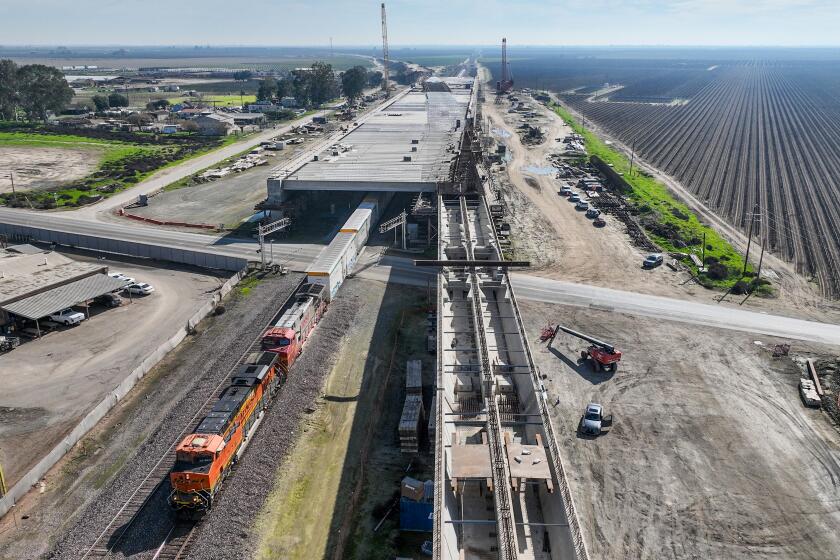Missing Points on Transit Zone Feasibility
- Share via
Supervisor Zev Yaroslavsky appears to have missed some of the pages in the feasibility study he happily quotes in touting the concept of an independent transit agency for the San Fernando Valley. Having researched the study, I would like to put forward some points he missed in his commentary.
The study clearly indicates that there is no guarantee of the zone’s success. It is often pessimistic, and in its discussion of possible viability several unrealistic presumptions are made:
* First, the study presumes that the Metropolitan Transportation Authority would turn over the buses and yards to the new zone authority. (How easy is it to show an economy of operation when you don’t have to pay for equipment and property?) Even if MTA did provide the equipment, it would not be the new compressed natural gas-powered buses that have appeared on Valley streets in recent years; those buses would undoubtedly be reserved for MTA’s own remaining operations. The zone would have to make do with nine- to 12-year-old diesel-burning buses until it could acquire its own--presuming it could afford them--two years down the road.
* Second, MTA’s successful new Metro Rapid bus line on Ventura Boulevard is included in the list of lines for proposed zone takeover (again, with brand-new buses to be provided by MTA). MTA is not going to turn over its shining new pilot project, and Yaroslavsky knows this; he is a director of the MTA. (And isn’t it a conflict of interest for him to sit both as MTA director and as chair of the Valley Transportation Zone Interim Joint Powers Authority, since he would have to vote on whether the zone would be created?)
* Third, the study proposes that the zone take over lines “of regional significance” but does not anywhere show how it would meet the special conditions required to do so. Because most of the streets those lines run on (Roscoe Boulevard, Sherman Way, Van Nuys Boulevard and San Fernando Road) are targeted for expansion of the Metro Rapid project, assurances need to be made that the limited and express lines on those streets would be returned to MTA when Metro Rapid expands--but no such assurances are given.
This last omission is particularly significant because the same consulting firm that created the Metro Rapid study was commissioned for the zone study. That same firm created the San Fernando Valley Transit Service Restructuring Study in 1995, which has been stalled while zone proponents have conducted their studies. That process has taken nearly three years--not the six months Yaroslavsky implies--and MTA’s service planning department has stood by helplessly while politicians work on their pipe dream.
The supervisor’s semantics in defining the Valley’s size in terms of MTA service are decidedly misleading. We are not 18% of the MTA’s service area, but we only make up 18% of the daily ridership (only one of MTA’s top 20 lines runs within the Valley). Like it or not, the portion of MTA’s service area that runs from the Westside through downtown has the highest ridership and therefore gets the lion’s share of service. Does that make the Valley an “afterthought”? No, but it also doesn’t mean a transit zone would see a need for--or be able to afford, since high-ridership lines subsidize MTA service in the Valley--significantly higher service levels.
I agree with the supervisor that elected officials “owe it to public transit customers to give them the best, most dependable and most cost-effective service possible.” But nothing in his commentary--or the feasibility study--proves that a new agency is the answer. Those who use public transit should urge the MTA board to deny the zone application and return to the halted task of improving service.
More to Read
Sign up for Essential California
The most important California stories and recommendations in your inbox every morning.
You may occasionally receive promotional content from the Los Angeles Times.










